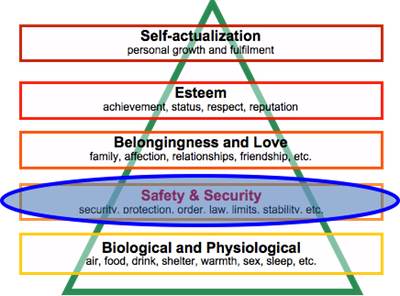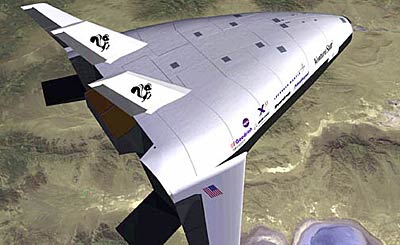Is this the beginning of the end, or the end of the beginning, of deep space human spaceflight?by Charles E. Miller
|
| I am convinced that we are looking at the potential collapse of our nation’s deep space human spaceflight agenda. |
I also thought about discussing the critical role of commercial orbital transfer vehicles that use electric propulsion. Or, how we might pull all of these pieces together into an integrated whole, using open transportation standards to maximize market-based competition, increase innovation, and include of our international partners. Those talks will need to wait for another time.
There is something much more important to talk about. I am convinced that we are looking at the potential collapse of our nation’s deep space human spaceflight agenda.
This should not be news. It is not to me. I first spoke about this frightening scenario at the Space Access Conference in March 2008. Based on this, Jeff Foust and I wrote a Space Review article in April 2008, titled “The Vision for Space Exploration and the retirement of the Baby Boomers: Is this the beginning of the end, or the end of the beginning?”
In this article, we laid out the prediction that the then-current strategy would collapse. This prediction was based on the coming retirement of the Baby Boomers, which causes a huge structural budget deficit. This train wreck was obvious to those willing to look at the hard facts.
But I never thought it would be this bad. I never thought this topic would become the focus of a major presidential debate—watched by tens of millions of Americans—and the pro-space candidate would be handed his hat because he made an argument for deep space human exploration.
In case you missed it, let me recap a few details from the presidential campaign.
On January 26, in Florida, with tens of millions of Americans and the majority of the members of the US Congress watching, Mitt Romney stated that if somebody came to him and said: “they wanted to spend a few hundred billion dollars to put a colony on the Moon, I'd say, 'You're fired.'”
In the same debate, Ron Paul added:
“the only part that I would vote for is for national defense purposes. Not to explore the moon and go to Mars.”
“It should be privatized … And I just think that we don't need a bigger, a newer program …” [this is from the Libertarian candidate from Texas] “health care or something else deserves a lot more priority than going to the Moon … space technology should be followed up to some degree for national defense purposes, but not just for the fun of it.”
Newt lost Florida.
Since that time, Newt has attempted to respond, which has only opened himself up to further attacks. The Romney campaign stated on February 5th that:
“Speaker Gingrich just doesn’t seem to get it. Our staggering national debt and recurring deficits are jeopardizing America’s fiscal future – yet he attacks critics of his moon base proposal for being ‘cheap’ and ‘stingy.’”
Rick Santorum produced a radio ad stating:
“Reckless spending has led to a 15-trillion-dollar national debt. That’s $50,000 of debt for every person in America, and it’s crushing our economy. And what’s Newt Gingrich suggest? Spending half a trillion dollars on a moon colony.”
“Gingrich’s idea is fiscal insanity. And another reason true conservatives are uniting behind Rick Santorum.”
It was even the basis of a Saturday Night Live skit mocking Gingrich. And the absolute worst thing? It worked! Santorum has convincingly taken the national lead as the “Not-Romney candidate”.
| The key to winning the argument in this time of fiscal austerity—the key to saving deep space human spaceflight—is to formulate an argument that will resonate with the vast majority of "pragmatists" in the US Congress, who live on both sides of the aisle. |
Friends and colleagues, we have to do something. We can’t ignore this any more. By ignoring how reality—of huge structural budget deficits and the coming major budget cuts—is framing the thinking of our elected leaders, we are only hurting ourselves. We are all in this together.
The key to winning the argument in this time of fiscal austerity—the key to saving deep space human spaceflight—is to formulate an argument that will resonate with the vast majority of "pragmatists" in the US Congress, who live on both sides of the aisle. We need an argument that will resonate with the Mitt Romneys, Rick Santorums, and Ron Pauls of the world.
We only need to look to Maslow’s Hierarchy of Needs. Based on Maslow, we need an argument that clearly, explicitly, and unequivocally addresses the fundamental security needs of the American people.
 |
Maslow’s Hierarchy of Needs, based on research published in 1943 by Abraham Maslow in a paper titled “A Theory of Human Motivation”, is based on empirical observations that humans are driven to satisfy basic or primitive needs first, starting with survival, and then safety and security, before they will focus resources on higher order needs. As lower-order needs are satisfied, people will focus more on higher-order needs. Maslow’s research can be used to explain many things, such as why the largest expenditures in the federal budget are Social Security, Medicare, and national defense. Or why, in the fall of 2008, when the Republican Treasury Secretary told Congress we could be watching the complete collapse of the world economy, and he wanted them to write a huge bailout check, the US Congress basically said, “How many zero’s do you want?”
Maslow’s work also explains why the US government was willing to spend four percent of national GDP on Apollo. As we now know, Apollo was justified as part of the Cold War.
We can’t just pick any argument—say it is national security—and move on. We must make a clear, definitive, and inarguable national security case. For example, many have tried the “China is going to beat us to the Moon” argument. It has repeatedly failed. This argument collapses in the face of the inevitable “so what, been there, done that” response from the pragmatists and the “you’ve got to be kidding” response from the real national security experts.
I know of one argument that uses Maslow, and which will support the continuation of our deep space human spaceflight agenda.
That argument is "low cost access" and "national security". I have used this argument in the Space Review (see “The Vision for Space Exploration and the retirement of the Baby Boomers (part 2)”, The Space Review, May 5, 2008) as well as the Wall Street Journal and CNN.com.
We have hard empirical evidence proving that these two arguments can win when packaged together. It has happened twice in times off fiscal austerity.
Data Point #1: In the early 1970s, in a period of fiscal austerity, the pragmatic political class was sold on the concept of low-cost access to space that would provide benefits to national security. Thus was born the Shuttle.
Data Point #2: In the early 1990s, in another period of large deficits and fiscal austerity, the pragmatic political class again was sold on the concept of low-cost access to space. This time it was the X-33, X-34, X-37 and the military spaceplane program.
It does not take a rocket scientist to figure out that what worked before, can work again. The past is prologue.
| We can’t lose another decade. We may not get another chance. |
The more pragmatic politicians—those concerned about budget deficits—wanted, and still want, low-cost access. If you listen to Romney, Paul, and Santorum, they clearly want something that will directly and unequivocally benefit national security. I say, “Give them what they want.”
This room is filled with business people. You understand the difference between marketing and selling. We need to stop “selling” and start “marketing”. That means taking a minute to listen to our elected leaders.
We need to give those leaders what they say they want—they want lower costs and improved national security. How do we do that?
Commercial reusable spaceplanes . By “spaceplane” I don’t mean it has wings. I mean it has plane-like characteristics of reusability, rapid turnaround, high flight rates, low marginal costs per flight, high reliability, and a priority focus on operability and maintainability. While rocket designers love to debate the various technical approaches to developing fully reusable spaceplanes, I am agnostic on this issue.
The secret is that we have the basic technology today to implement the original vision of the Space Shuttle from the 1970s: a Two-Stage To Orbit (TSTO) fully-reusable spaceplane that flies 50 or more times per year.
We are far ahead of where we were 40 years ago. Structures, materials, and thermal protection systems are stronger, lighter, and more durable. We have advanced computational design tools that are many orders of magnitude ahead of where we were in the 1970s. We have vastly improved our general knowledge of hypersonics from the Shuttle, to the X-37, ans to other programs. We have much better knowledge of operability challenges & lessons learned, again from the Shuttle. All of these put us vastly ahead of where we were in the early 1970s.
The X-37 is empirical proof that we have the critical basic technology in hand. It is a reusable Mach 25 reusable spacecraft that is based on 1990s technology. The Mach 25 portion of a two-stage-to-orbit RLV is the hardest part. The X-37 demonstrates we have the fundamental technology we need.
We may have had the technology for a two-stage fully reusable spaceplane in the 1990s. I personally heard executives from companies like Boeing, Rockwell, and McDonnell Douglas say as much. Why didn't we build it? Because we had to make it exciting, swing for the fences, and attempt to develop a Single-Stage to Orbit RLV instead. And another decade was lost.
We can’t lose another decade. We may not get another chance. The deficit cutting pragmatists—the deficit wolves—are at the door.
We need to come together now and make our most compelling argument. That argument will explicitly target, and unequivocally and convincingly deliver, clear national and economic security benefits.
Now is the time for us—all of us—to refocus on reusable spaceplanes.
